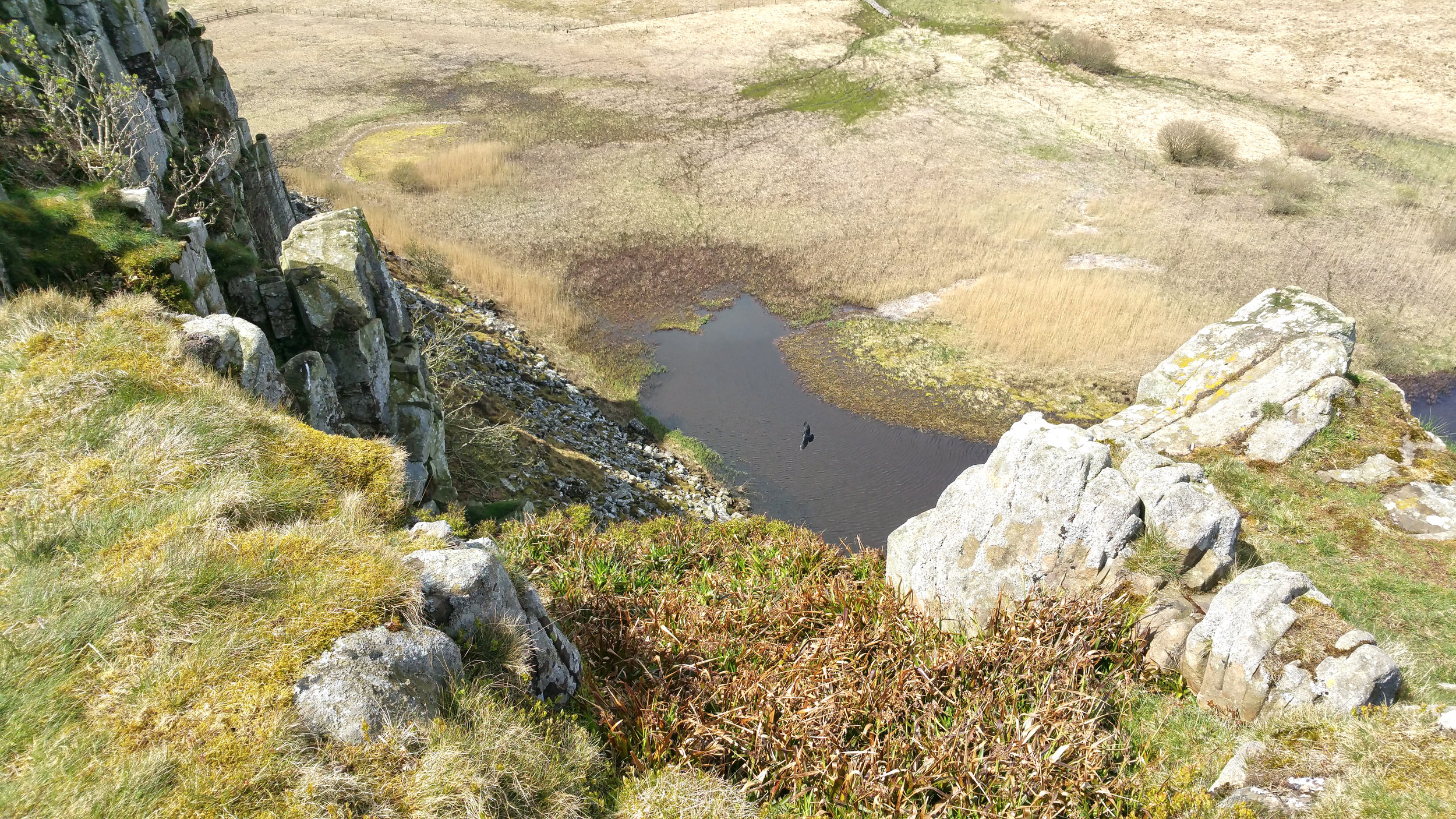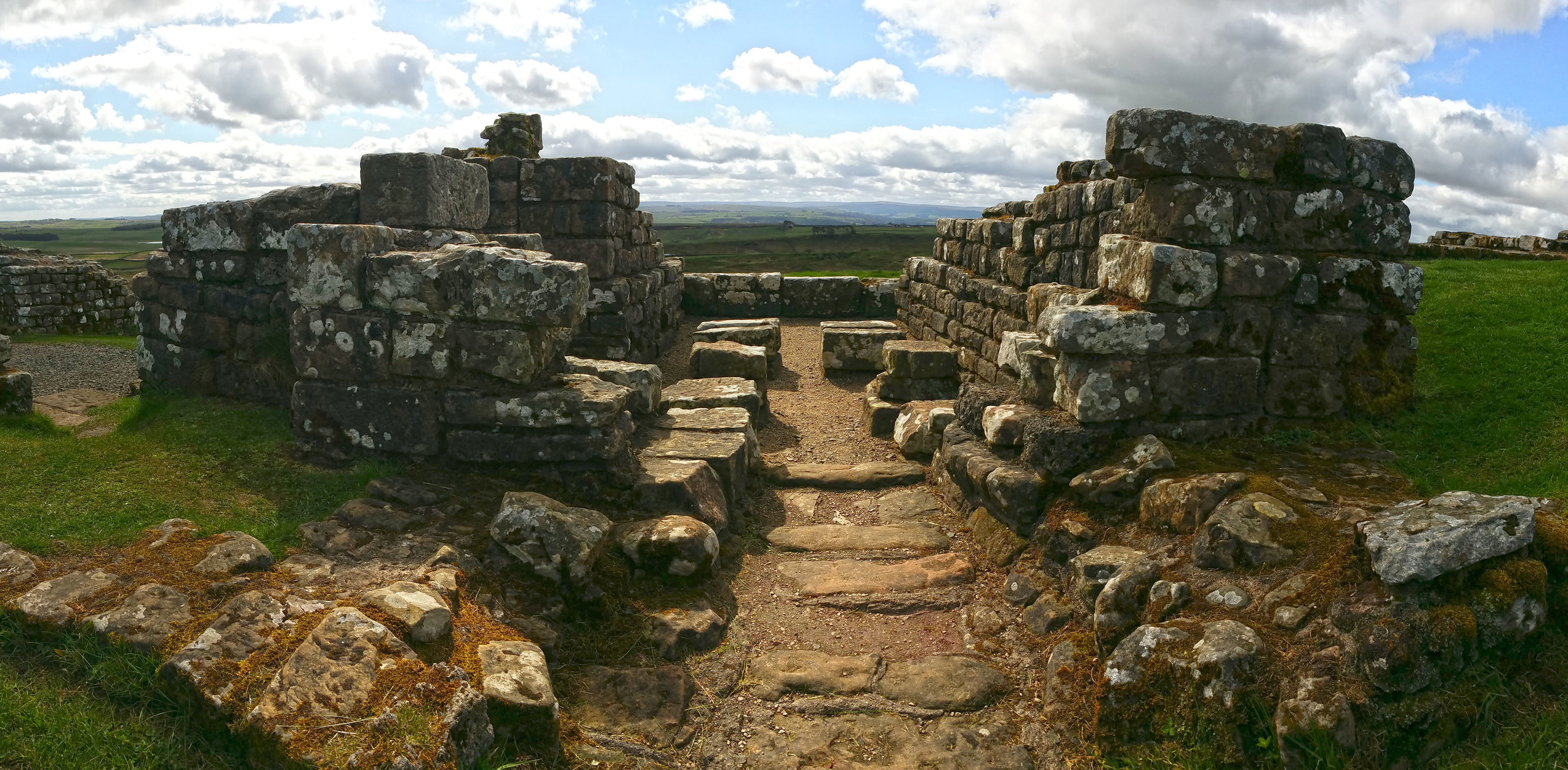Hadrian's Wall was a spot that I first saw through a bus window when visiting Newcastle upon Tyne in 2013. I saw the famous Sycamore Gap pass by in silhouette as the sun was setting. And I felt the now-familiar pull in my chest that has become the predominant force in planning my future travels.
It's no surprise, then, that I found myself back here in early May of 2015. Despite this being a focal point of my trip, my time was limited, as I was traveling on to Scotland and Skye (always Skye), trying to pack a lifetime of sights and memories into a single trip. I also didn't have a car on this section of the trip, so I was forced to leg it as much as possible.
That's fine, as walking is my preferred method of being. But it means I was a slave to the bus schedule, which is never an enjoyable thing when you're somewhere you feel like you could explore forever. According to my smartphone, I put in about 15 miles this day, up and down the rolling hills along the wall and to a nearby lake. Given the scenery (and the many sheep), I would love to put in a couple hundred more miles here some day.
Of course, the whole of the 117.5 kilometer (73 mile) stretch of Hadrian's Wall, including its 80 milecastles (small manned forts) and 158 turrets, are of Roman construction. Considering its location, about 1,400 miles from Rome, and across either the North Sea or the English Channel, the fact that it was built at all is a huge testament to Rome's power and logistical abilities. Work on the wall began, at the behest of Emperor Hadrian, in 122 AD.
The wall was, though, a huge overreach on Rome's part, stretching the empire's resources for what seems to be little long-term gain. This was exacerbated by the construction of the Antonine Wall even further north in modern-day Scotland a couple decades later. The Antonine Wall was abandoned just 40 years after construction began, while Hadrian's Wall was occupied in some form by Rome for nearly 300 years.
Aside those 80 smaller milecastle posts, Hadrian's Wall also had 17 larger forts along its 73-mile length. Of those that remain in any substantive form, Housesteads is among the best preserved. It's also conveniently located just two miles from the Sycamore Gap (either along the Pennine Way or the B6318 road, depending on how you're traveling).
Housesteads is actually the name of the English farm here that included the land of the fort. The Roman name for the area when the fort was in use was Vercovicium, or "the settlement on the slope." The name the surrounding land has changed, but the slope is very much still here.
Construction of this fort was started just a couple years after work on Hadrian's Wall began. Much of what remains is a sprawling collection of ruins made low by time and by nearly 2,000 years of locals using the stone blocks for their own purposes. But it's still a grand sight to behold, set off by a backdrop of some stunning scenery.
The fort also has an excellent modern visitor's center and interactive museum that helps give a visual sense of what the fort was like in the years during and after its completion. But as with most locations like this, the bulk of the reward for visiting comes from wandering around the ruins and soaking in a couple thousand years of history.
Interestingly, one of the primary reasons this fort is so well preserved today is that a group of bandits or "border reivers" made it their home in the 16th century, keeping would-be stone thieves away at a time when many nearby monuments and ancient sites were raided for building materials. For more on this and further history of the fort and surrounding countryside, I encourage you to read this excellent page at Discover Britain.
Items to look for within what remains of Vercovicium include the foundations of a hospital, barracks, and granary. The latter (seen in the upper-right image above) retains the many small stone pillars used create a raised floor. This kept food stocks dry and away from rodents. Flaps were even put in place to let dogs into the section below the floor to kill or chase away small animals attempting to eat the Roman food stash. Obviously, maintaining food stocks were important for such a large settlement so far from Rome London.
While there's plenty to see down near the ground in the low ruins, don't forget to lift your head up now and then while you're there. Because the surrounding countryside is stunning--especially if you're lucky enough to be there on a day when the sun is out and the grass is green.
In the 400 years or so that Hadrian's Wall was occupied by the Romans, I would imagine the soldiers had at least a few of those pleasant days as well.
And if the weather turns bad and you'd like a spot of refuge after visiting the fort and the wall, I recommend stopping at the Milecastle Inn for a pint or a bite. Even when the weather's nice, it's it's a pleasing stop after you've spent the day walking through the countryside—and 2,000 years or so of history.










